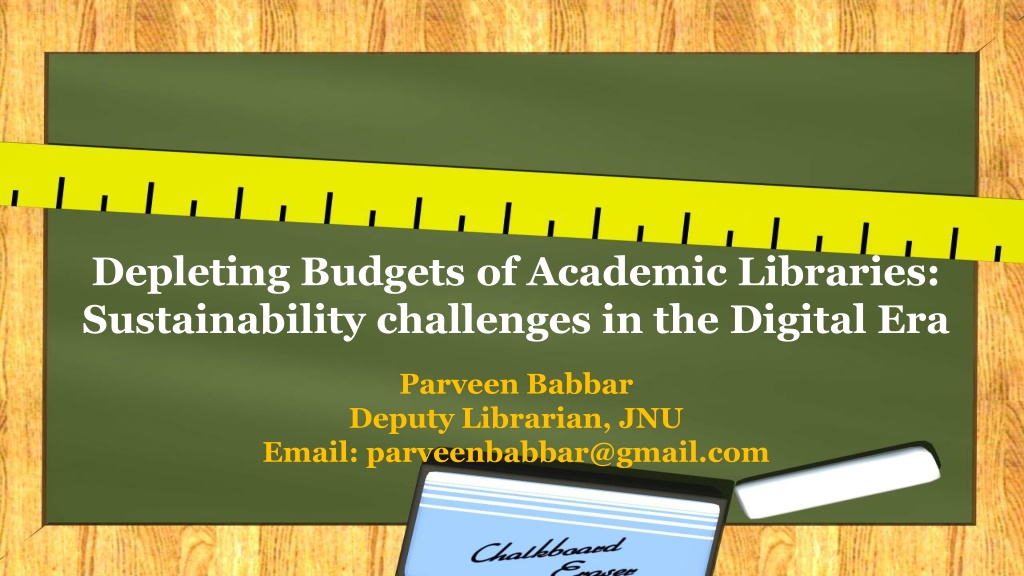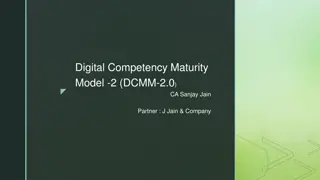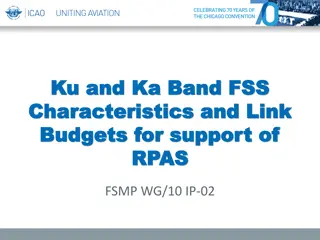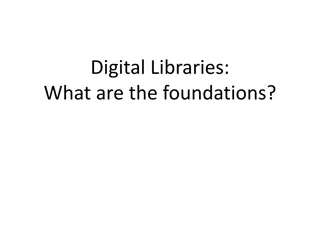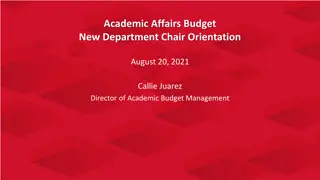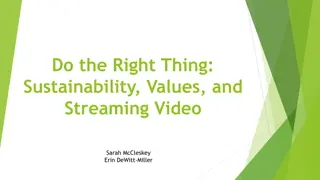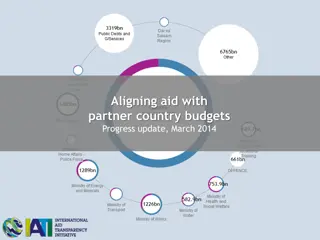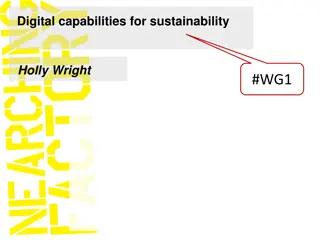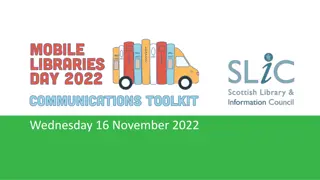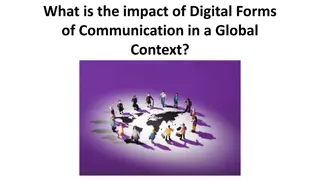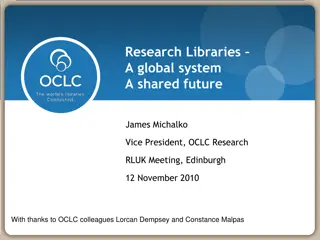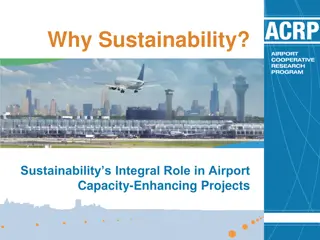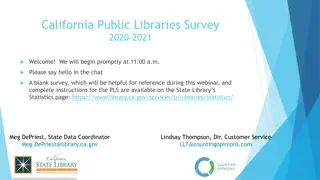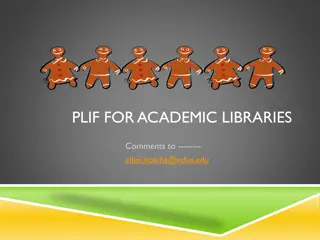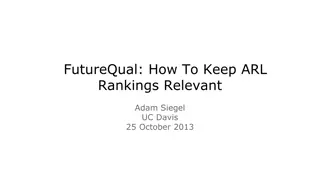Challenges of Depleting Budgets in Academic Libraries: Sustainability in the Digital Era
Depleting budgets in academic libraries are posing sustainability challenges in the digital era. Budget cuts impacting libraries globally, with a major decline in India. The shift towards public-private partnerships in education is affecting budget allocation. India's education budget faces constraints in funding new policies. The rise of online courses and HEFA funding mechanisms reflect attempts to address funding issues.
Download Presentation

Please find below an Image/Link to download the presentation.
The content on the website is provided AS IS for your information and personal use only. It may not be sold, licensed, or shared on other websites without obtaining consent from the author. Download presentation by click this link. If you encounter any issues during the download, it is possible that the publisher has removed the file from their server.
E N D
Presentation Transcript
Depleting Budgets of Academic Libraries: Sustainability challenges in the Digital Era Parveen Babbar Deputy Librarian, JNU Email: parveenbabbar@gmail.com
Depleting Budgets Budget cuts and depletion of the budget to academic libraries is not a new scenario, however with the emergence of digital world and changes in education sector, such budget cuts pose a major challenge to libraries not only in India but globally as well. The funding of Higher Education in India, has relatively impacted the Indian Academic Libraries. The current decade is witnessing a major decline in budget allocated to the Academic Libraries in India. The change of state-controlled, publically funded system to a system dominated with public-private partnership and market based, has further contributed to changes in the pattern and allocation of the budget structures in higher education.
Education Budget of India Source: Jyotsna Jha, Madhusudhan Rao, India s Education Budget Cannot Fund Proposed New Education Policy, September 10, 2019. Available at https://www.indiaspend.com/indias-education-budget-cannot-fund-proposed-new-education-policy/
Education Budget of India The government s Draft New Education Policy released May 2019 suggests increasing spending on education from 10% of total government expenditure to 20% by 2030. However, there is no funding available for such an increase in India s current education budget. Of the total Rs 94,853. 64 crore education budget, Rs 56, 536.63 crore has been pegged for the school sector and rest Rs 38,317.01 crore has been allocated to the higher education The share of the union budget allocated to education fell from 4.14% in 2014-15 to 3.4% in 2019-20 Allocation of Rs 130 crore in 2019-20 is dedicated for the promotion of technology-based online courses The government has made available Rs 30,000 crore using the Higher Education Financing Agency (HEFA) funding mechanism
Public funding for HE Budget pressure Unemployment and social benefits Consolidation of public budgets Ageing-related expenditure Continued expansion of HE Rise of eligible students for student aid Response Cuts on expenditures to HEIs after relative protection under stimulus packages Slower growth of public expenditures in the longer run Rise in tuition fees Inadequate student aid More competitive allocation of funding and further segmentation of systems Source: The future of higher education - OECD.org, available at https://www.oecd.org/education/imhe/43325389.ppt
Private funding for HEIs Pressure Less business Cuts on R&D expenditures Cuts on corporate training Less endowments of foundations Less willingness to have interns and apprentices. Response Less ability to fund university research, to fund their employees for training and and to participate in university programmes Source: The future of higher education - OECD.org, available at https://www.oecd.org/education/imhe/43325389.ppt
Institutional response Revenue Raise tuition fee levels (if they can) Look for new revenues (international students where differential fee, part-time students, further education, non-degree education, etc.) Compete more for research funding Efforts to raise more corporate funding where it is small (but slow process) Cost Postpone maintenance and infrastructural costs, including library costs Look for further administrative efficiency Freeze hiring of new faculty More differentiated status of new faculty (teaching/research) Increase student/staff ratio or decrease face-to-face instructional time Source: The future of higher education - OECD.org, available at https://www.oecd.org/education/imhe/43325389.ppt
Impact of the economic crisis on Education Government underfunded Commoditisation of education Risk aversion of students and family: less confidence in loans and financial products and less investment in higher education Slowdown or acceleration of internationalisation Restructuring of higher education systems Source: The future of higher education - OECD.org, available at https://www.oecd.org/education/imhe/43325389.ppt
Higher education Globalisation Drivers Trade liberalisation in education (GATS, bilateral) Features Global competition for education and research services Public funding for non-commercially viable disciplines exclusively Segmentation of the education and research market Vocational higher education: important share of the market Strong (international) division of labour according to competitive advantage Concentration of research and worldwide competition for funding English as main language of study
Organizational Perspectives on planning, budgeting, and evaluation There are three contrasting perspectives on the budgetary process Rational: assumes stakeholders work in a logical fashion to improve student outcomes Bureaucratic: standard patterns of behaviors based on the rules and regulations of a top-down hierarchy Political: budgeting is a power play among actors seeking organizational rewards Source: Peabody College Series, Allyn & Bacon 2009. Available at http://www.kean.edu/~lelovitz/docs/Finance%20/LP%209%20Budget.ppt
Budget Planning Approaches Rational Assumptions: development educational budget improves student outcomes Planners have an appropriate knowledge and authority to develop a plan centered on student outcomes as a primary criterion Planners operate with technical efficiency, which requires that those involved strive to produce a maximum level of outcomes with financial, organizational, and legal constraints of an and plan that logically Bureaucratic Assumptions: focuses on sustaining or increasing previous year s spending base Assumptions: budgeting is bargaining among self- interested individuals and groups planning Educational objectives are secondary goals and Planners organizational processes - status quo is maintained from one year to the next Conflict is seen as normal; Power players develop goals; Plans are subjective without formal measures support existing Political The education plan and budget is a political activity. Student outcomes are considered. development of the seldom Source: Peabody College Series, Allyn & Bacon 2009. Available at http://www.kean.edu/~lelovitz/docs/Finance%20/LP%209%20Budget.ppt
Digitization Neil Postman in his book The Surrender of Culture to Technology in 1993 said Technology is ultimately a friend but mostly it is a "dangerous enemy" that "intrudes" into a culture "changing everything and even "eliminates alternatives to itself. To fully adopt virtual reality and make available artificial intelligence based learning resources towards teaching and learning processes. To include upto 60% open educational resources in the library collection. Enhancing the Student portfolios to document learning To make paperless working environment in the institutions. Source: The future of higher education - OECD.org, available at https://www.oecd.org/education/imhe/43325389.ppt
Financial Crisis and academic libraries How to respond? Evaluate workflow to increase efficiency Conduct internal strategic planning through data analysis Prioritize projects and programmes Renegotiate electronic resources as per economic conditions Cancel resources/databases/subscriptions when there is overlapping content Increase outreach/ marketing, fundraising Take environmental initiatives
Strategic Plan Assess Budget Impact Prioritize Activities Each Year Assign Development Funds to Meet Strategic Goals and Secure Others Look for Appropriate Grants Leverage Funding Opportunities Develop learning and community-building spaces Improve awareness of resources and services Source: Marianne Gaunt, University Librarian, RUL: Budget, Reorganization, Strategic Plan,2006. Available at https://www.libraries.rutgers.edu/rul/staff/planning/reports/budget_reorg_stratplan_0606.ppt
And finally.. Higher Education and Academic Institutions must continue to improve with less money More shared resources and collaboration Collaboration has been touted as a critical path for libraries. But the counter forces at work-competition, institutional ranking, self-interest, ownership, user resistance-makes putting into practice problematic. However, the twin pillars of digital access and a deepening economic crisis may force libraries to embrace collaboration more fully. (Anne Kenney, Collections, Preservation, and the Changing Resource Base in Access in the Future Tense, CLIR, April 2004 )
